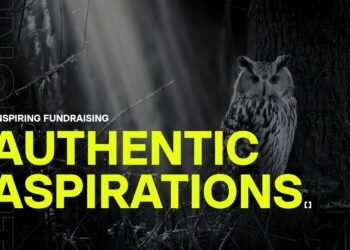Does this sound familiar? A meeting with a potential donor starts strong, your deck lands, and you see heads nod — but then the energy drifts by the end of the meeting. This happens not because your case is weak, but because the conversation never reached what moves a donor closer to a gift: their own story.
A common pitfall that we find when crafting the campaign story with a partner is when we try to predict what a donor wants to hear. Instead, what if your campaign story is a catalyst for starting a passion conversation with them?
If you leave that meeting with a sense of what they love and where that intersects with your mission, then you’ve done your job. Details can follow by email and phone. However, you can never get back a missed moment for that initial connection.
Passion is a mirror.
To know what fuels the supporter’s passion, you need to understand what fuels yours. And, what better place to understand what fuels your passion than your own story? The better you know your story, the easier it is to listen.
Story fluency doesn’t make you take more — it helps you to talk less. When your campaign’s messaging, proof points, and priorities live in muscle memory, you don’t cling to a slide deck or script. You can be fully present, hear/see the donor’s (body) language, and mirror it quickly and authentically.
What story fluency looks like
Start off by knowing these parts of your campaign messaging by memory:
- Our Profile: What is the campaign?
- Our Impact: What do we hope our campaign will achieve?
- Our Proposition: What makes our campaign unique and special?
When you can say each in a sentence or two, you are free to be fully present in the passion conversation and can fully connect.
Start with a real question, not a pitch.
Rather than lead with a question such as, “What’s your passion?” or “What are you interested in?”, invite the donor to tell a true story about themself.
“Tell me about a moment when this got personal for you.”
“Who first showed you that this cause matters?”
“Years from now, what would progress look like to you?”
Then, mirror back what you heard — in their words.
“I’m hearing proximity matters: you need to see impact up close, not just read about it.”
Now, bridge from their passion to your story.
“That’s exactly what this campaign priority is designed to do: keep families stable and children in their schools.”
“This year we’re breaking ground on a new, state-of-the-art research lab, with the goal that it will provide us with the insights and breakthroughs to cure this disease.”
End with a small ask that continues the passion conversation.
“Would you be open to meeting the program lead next month and seeing the work up close?”
A word on that pocket guide or one-pager
The campaign one-pager or condensed Case for Support is a tremendously valuable resource that you should integrate into your meeting agenda. Use it to bring the campaign’s vision to lift without crowding the conversation.
Knowing your story so well that you can set it down will allow you to pick up theirs. Passion is contagious — let them catch yours, and let theirs shape what comes next.













![2025 Social Media Content Calendar [Infographic]](https://mgrowtech.com/wp-content/uploads/2025/05/2025-Social-Media-Ideas-12-Month-Content-Calendar-350x250.jpg)



